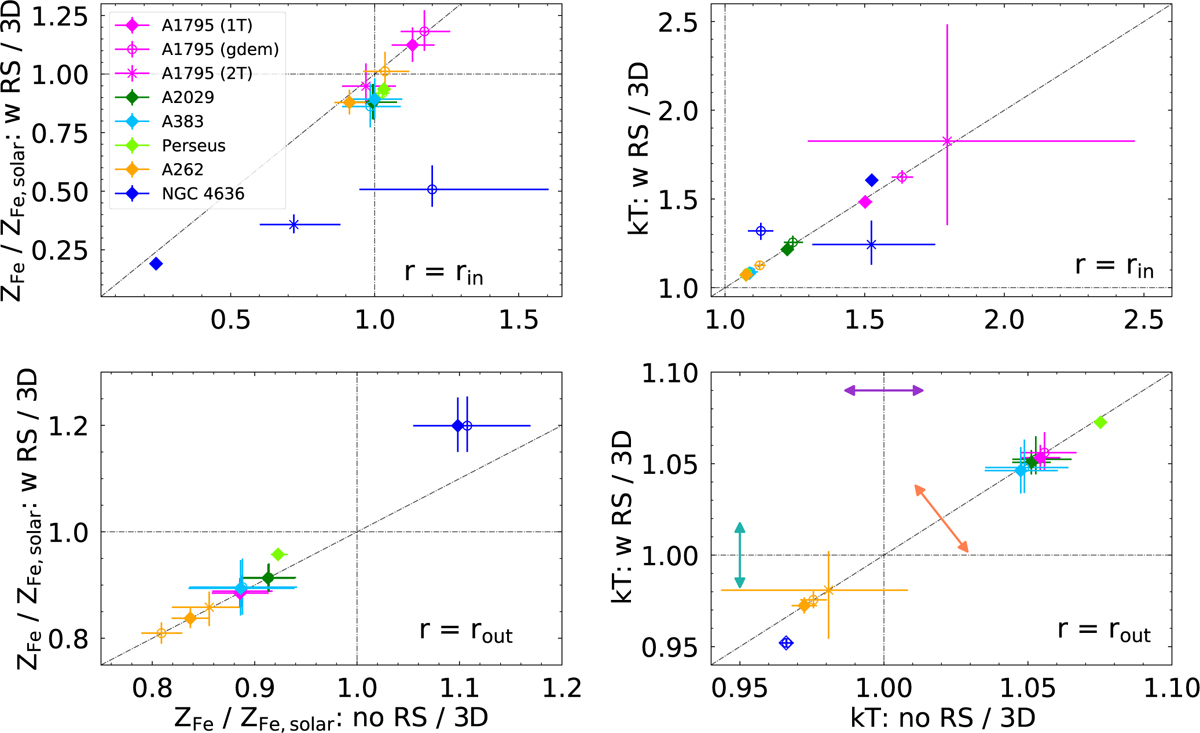Fig. 4

Download original image
Best-fit values of 1T (diamond points), 2T (cross), and gdem (empty circles) models to the Chandra ACIS-S simulated data with and without the effect of RS for an exposure time of 500 kiloseconds. The left panels show the best-fit iron abundance values, whereas the right panels show the best-fit values for temperature. The top and bottom panels show the best-fit values for the innermost and the outermost shells, respectively. The shell thickness for most of the objects is approximately between 5 and 6 kiloparsecs for rin and between 80 and 110 kiloparsecs for rout, with the exception of A383 (rin ∈ 5–8.5 kiloparsecs, rout ∈ 66–110 kiloparsecs) and NGC 4636 (rin ∈ 0.3–1.2 kiloparsecs, rout ∈ 12.6–35 kiloparsecs). All best-fit values have been divided by their corresponding input (3D) values. The best-fit values of the 2T model, for which the second CIE component was not significant, were removed from this plot (see last paragraph of Sect. 2.4). The 1T model results of NGC 4636 for the best-fit temperature at rout are plotted with an empty diamond point for visualisation purposes.
Current usage metrics show cumulative count of Article Views (full-text article views including HTML views, PDF and ePub downloads, according to the available data) and Abstracts Views on Vision4Press platform.
Data correspond to usage on the plateform after 2015. The current usage metrics is available 48-96 hours after online publication and is updated daily on week days.
Initial download of the metrics may take a while.


